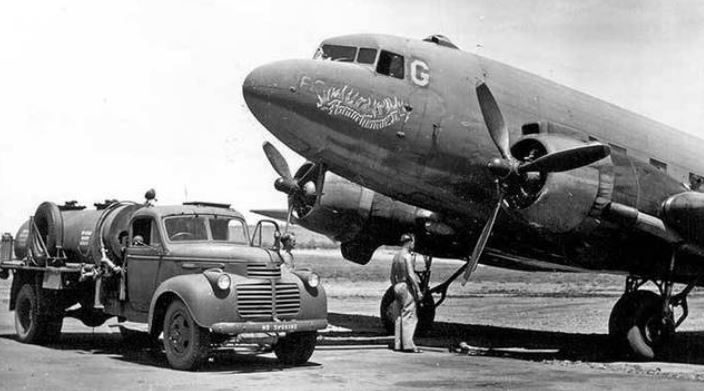Difference between revisions of "No. 75 Operational Base Unit RAAF"
From Our Contribution
(Created page with "{{Infobox | name = | title = | above = | subheader = | image = File:OBUs.jpg | caption = | image2 = | capti...") |
(No difference)
|
Revision as of 22:07, 31 March 2024
 |
Brief History
Australia's sheer landscape and lack of population posed all sorts of challenges to the movement of aircraft with relatively modest operating range. Safety was paramount, and the RAAF nbeeded to provide emergency and designated landing grounds to support the safe transit of aircraft from one side of the country to the other.
A large network of Operational Base Units was established to operate these transit airbases, to provide emergency services and in some cases a facility to effect repairs and servicing of aircraft in transit. Some were co-located with major bases but most were set up to ensure adequate coverage of transit routes between major bases and operational areas. The Unit began with one officer and six other ranks. The men were quartered in the station wool shed, until the arrival of 24 more personnel after which they all moved to adjacent sheds and tents. The water supply was obtained from the nearby Fitzroy River which was subject to flooding in the wet season.
No. 75 Operational Base Unit was formed on 1 Mar 1943 at Noonkanbah, on the Fitzroy River in Western Australia, withthe unit HQs established at Fossil Downs station. They established bomb and fuel dumps beside the existing air strip which was often used as a stagging point for Netherlands East Indies (NEI) forces. Regular supply flights were made to and from Broome and refueling links were made with Derby, Guildford, Learmonth, Corunna, Cunderdin and Coomalie Creeck. RAAF squadrons using Noonkanbah were numbers 24, 25 and 31 and aircraft based at the Unit were Anson and Tiger Moth. The strip was Suitable for heavier aircraft such as Liberators, Beauforts and C-47s.
On S Apr 1943 the Commnnder of North·Western Area, arrived and offered to assist with canteen supplies, as well as training in guerilla warfare. The lack of fresh food supplies was often a problem for the Unit and personnel often had to rely on tinned meat and vegetables. An outbreak of food poisoning occurred early in 1945 due to rusted tins used due to a lack of fresh supplies. On 30 Sep 1944 all surplus fuel was transported to Derby and the basc became non-operational. With the cessation of hostilities in the Pacific, personnel startcd to be posted out for discharge. On Chrisbnas Eve 1945, a Liberator arrived to uplift the remaining personnel to Guildford and the Unit was then disbanded.
Unit Personnel
Notes